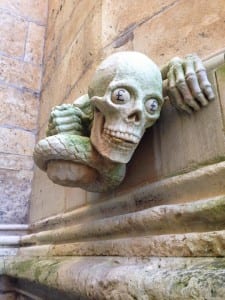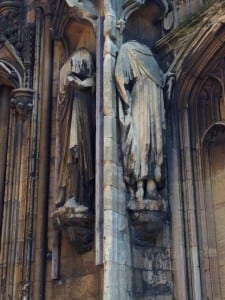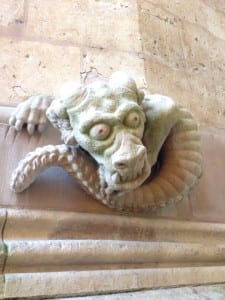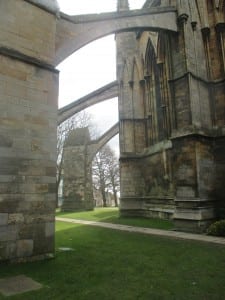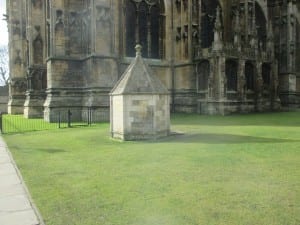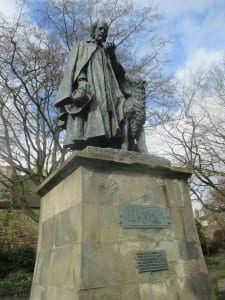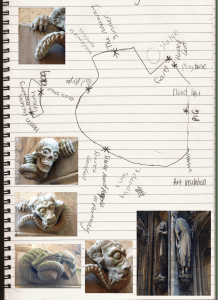Walking into the Cathedral, I was in awe. The pure beauty of the building was all around; in every nook and crevice, every stained glass window and every buttress.
During the workshop session, Lizzie, Kia and I decided to shelter from the pouring rain inside the Cathedral. At this point, we thought it would be a good time to discuss and make plans of what we would like to create for our Site Specific performance.
We liked the idea of an audio walk but to add a twist onto it. One of our ideas was to have our audience participate in an audio game (almost like a scavenger hunt). The idea of incorporating the Cathedral into our performance intrigued us so, bearing this in mind, we looked around the building for some ideas to use. That was when we came across the war memorial part of the Cathedral, the side room dedicated to those who perished in WWI, WWII and the most recent wars. It was quite daunting, walking around that room as there were historical artefacts such as old battered Union flags from the different time periods and old records which listed the dead. It struck a chord as in that moment the wars became all too real and also highlighted just how important Lincolnshire was during the wars and even to this day. We knew at that moment we wanted to use this as some sort of basis.
We would start our audience off with a pre recorded tour which would have instructions on it to follow. We had the idea of having three different walks so that our audience members could experience different things and could discuss their findings with each other. One of the walks could incorporate the war memorial in the Cathedral. The audio could include bomb sound affects along with the audience being told to duck or find somewhere to hide. Their path could start at the castle, thus including the historical elements of wars and battles and would lead to the Cathedral. We could also tell the audience members who were taking the tour facts about Lincoln during the war.
The only problems with this idea would be getting the permission to go inside the Cathedral and use it as part of our tour as well as the issue of entrance fees.

